CrysAC Activity Archive |
| |
| For upcoming events and activities - please see news |
| |
| 2014 | 2012 | 2011 | 2010 | 2009 | 2008 | 2007 | |
| |
|
2014 |
| |
The International Year of Crystallography 2014
The International Year of Crystallography 2014 is being coordinated jointly by UNESCO and the International Union of Crystallography. It was proclaimed by the UN General Assembly in 2012.
The year 2014 marks the centennial of the birth of X-ray crystallography, thanks to the work of W. H. and W. L. Bragg, and M. von Laue who was awarded the 1914 Nobel Prize in Physics for his discovery of the diffraction of X-rays by crystals.
Opening Ceremony, Paris, 20-21 January 2014
The International Year of Crystallography was launched at the Paris headquarters of the UN Educational, Scientific and Cultural Organization (UNESCO) on 20-21 January 2014. More detailed information about the opening ceremony is available at: http://www.iycr2014.org/opening-ceremony.
More than 800 people attended the opening ceremony. Among the participants were government representatives, scientists and journalists. UNESCO Director-General Irina Bokova and IUCr President Gautam R. Desiraju presided over the opening session of this two-day event.
Crystallography in Art and Cultural Heritage was widely represented in the programme:
Philippe Walter - Director of the Laboratory of Molecular and Structural Archaeology (CNRS/UPMC) in Paris, this year also the chair in technological innovation at the Collège de France, delivered a lecture on Crystallography in the studies of art and historical artefacts. In Session 4 - Crystallography, symmetry and art two members of CrysAC Commission gave interesting lectures. Professor Abdelmalek Thalal from the Deparment of Physics at Cadi Ayyad University in Marrakech (Morocco) told about Symmetry in art and architecture of the western Islamic Golden Age and professor Emil Makovicky from University of Copenhagen (Denmark) delivered a lecture entitled Highlights of eastern Islamic ornamental art as seen through crystallographers' eyes. One more lecture - Modern math in medieval Islamic architecture was given in this session by Peter J. Lu from Harvard University.
The participants of the opening ceremony have also an opportunity to visit an exhibition on Journey into the Crystal prepared by French scientist Jean-Louis.Hodeau.
Special calendars for the International Year of Crystallography were designed on the initiative of the IUCr Commission on Crystallography in Art and Cultural Heritage. > Calender downloads
Alicja Rafalska-Łasocha, Jagiellonian University in Krakow
Photographic Impressions of the Opening in Paris |
| |
|
|
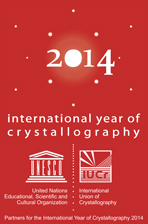
|
|
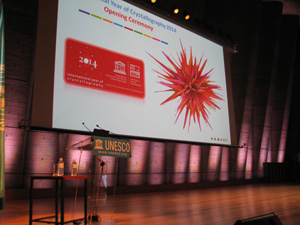
|
|
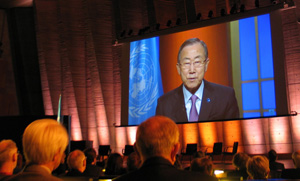 |
|
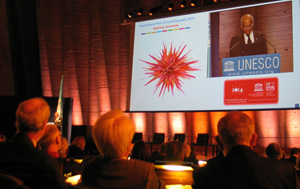
IUCr President Gautam R. Desiraju presided over the opening session. |
| |
|
|
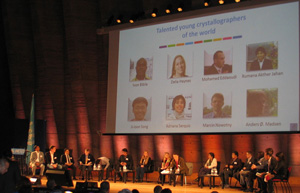 |
|
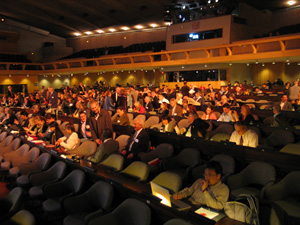 |
| |
|
|
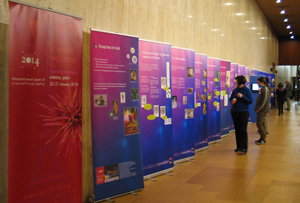
Exhibition: Journey into the Crystal, prepared by Jean-Louis.Hodeau.s |
|
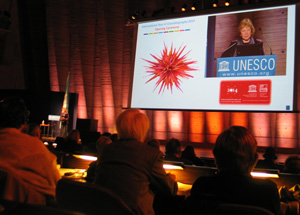
UNESCO Director-General Irina Bokova. |
| |
|
|
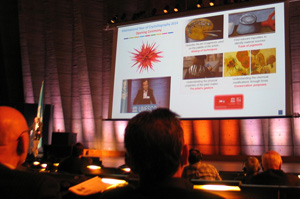
Philippe Walter - Director of the Laboratory of Molecular and Structural Archaeology (CNRS/UPMC), Paris, on Crystallography in the studies of art and historical artefacts. |
|
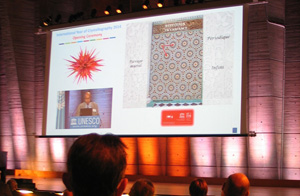
Abdelmalek Thalal from the Deparment of Physics at Cadi Ayyad University in Marrakech (Morocco) told about Symmetry in art and architecture of the western Islamic Golden Age. |
| |
|
|
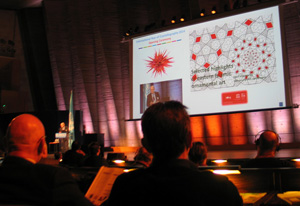
Emil Makovicky from University of Copenhagen (Denmark) on Highlights of eastern Islamic ornamental art as seen through crystallographers' eyes. |
|
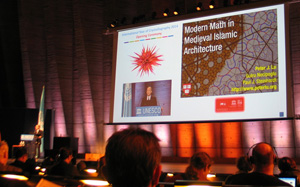
Peter J. Lu from Harvard University on Modern math in medieval Islamic architecture. |
| |
|
|
|
|
| |
| |
|
2012 |
| |
4th Meeting X-ray techniques in invetsigations of the objects of cultural heritage.
Celebrating the 100th anniversary of crystal powder diffraction
17 May 2012 -19 May 2012
Collegium Maius Jagiellonian University Museum, Krakow, Poland
> conferece website
> book of abstracts (pdf)
> visual impressions |
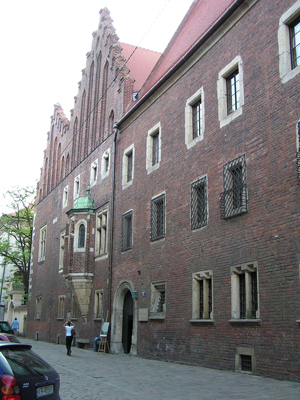 |
| |
When science meets art...
The international meeting X-ray techniques in investigations of the objects of cultural heritage. Celebrating the 100th anniversary of crystal X-ray diffraction was organised in Krakow (Poland) by the Faculty of Chemistry Jagiellonian University, the Jagiellonian University Museum, the Jerzy Haber Institute of Catalysis and Surface Chemistry of the Polish Academy of Sciences and the Conservation and Restoration Department of the Academy of Fine Arts in Kraków. The meeting was fourth conference which since 2008 is organized as an activity of the Crystallography in Art and Cultural Heritage Commission of the International Union of Crystallography.
Preservation and conservation of our cultural heritage is a significant, contemporary world-wide concern in which since a few years crystallographic community is also involved. Advanced scientific methods and techniques are essential for the identification of materials and processes which take place in historic objects. These methods can also help in a deeper understanding of the technology and craftsmanship of the old masters. Nowadays, material science deals with many problems from the area of cultural heritage. On 17-19 May 2012 the Collegium Maius of the Jagiellonian University housed over 90 scientists and museum professionals discussing scientific achievements in art and archaeology.
In 2012 scientists all over the world are celebrating the 100th anniversary of Max Laue's discovery of the diffraction of X-rays on crystals. The meeting in Kraków was also especially devoted to the diffraction phenomenon. Today X-ray diffractometry is a commonly used technique for revealing information about the structure of various materials. Similarly to the previous conferences, the Kraków meeting in 2012 was focused on investigations of historic materials like pigments, metal alloys and other substances, and on corrosion and deterioration processes of ancient objects by X-ray techniques and related methods.
Since 2010 the meetings X-ray techniques in investigations of the objects of cultural heritage have taken place at the heart of the City – Collegium Maius, the oldest university edifice in Poland. Its history goes back to the fifteen century. The appearance of Collegium Maius has not changed much since the second half of nineteenth century and the University Museum is still a home for ancient university collections, including the collection of old scientific instruments.
The opening lecture delivered by the former president of the International Union of Crystallography Professor Henk Schenk (Amsterdam University, the Netherlands) entitled From Röntgen and Laue to modern crystallography dealt with the history and modern achievements reached in the field of crystallography thanks to Laue’s discovery. The lecture was a wonderful journey through a century of X-ray diffraction. For 50 years this area of investigation has been fruitfully examined by Professor Henk Schenk.
The next lecture given by Professor Gilberto Artioli (Dipartimento di Geoscienze, Universita di Padova, Italy) Science for the cultural heritage: the contribution of X-ray and neutron diffraction introduced the participants into the wide range of applications of diffraction methods in different areas of cultural heritage studies. The book of Professor Artioli Scientific Methods and Cultural Heritage: An introduction to the application of materials science to archaeometry and conservation science, recently published by Oxford University Press, aroused great interest among the participants.
During the conference sessions scientists, art historians and conserva¬tors got to know the latest results obtained in the best conservation workshops and scientific laboratories. In the lectures given by Ina Reiche (Centre de Recherche et de Restauration des Musées de France), Thomas Wróblewski (Hamburger Synchrotronstrahlungslabor (HASYLAB) at Deutsches elektronen-Synchrotron (DESY), Hamburg, Germany) Matthias Alfeld (Universiteit Antwerpen, Department of Chemistry, Center for Micro- and Trace Analysis, Belgium), Eberhard H. Lehmann (Paul Scherrer Institut, Villigen PSI, Switzerland), Manfred Schreiner (Institute of Science and Technology in Arts, Academy of Fine Arts, Vienna, Austria), David Strivay (Institut de Physique Nucléaire, Atomique et de Spectroscopie & Centre Européen d’Archéométrie, University of Liege, Belgium) and Anabelle Križnar (University of Seville, Centro Nacional de Aceleradores, Spain) the results of application of modern X-ray techniques were fully described and discussed.
The specialists from the Polish museums and restoration departments also shared their knowledge and experiences with the conference participants. The second session began with the lecture of Janusz Czop, the Chief Conservator of the National Museum in Kraków, who told about the application of X-rays techniques in the conservation studios of Krakow’s museums. His talk was followed by the lectures delivered by the conservators from the National Museum in Kraków, Collegium Maius Jagiellonian University Museum and scientists and conservators from Conservation and Restoration Department of the Academy of Fine Arts in Kraków, the Center for Diagnosis Prevention and Telemedicine of the John Paul II Hospital in Kraków, the Faculty of Fine Arts, the Mikołaj Kopernik University in Toruń, the Jerzy Haber Institute of Catalysis and Surface Chemistry of the Polish Academy of Sciences, the Henryk Niewodniczański Institute of Nuclear Physics, the Polish Academy of Sciences, and the Faculty of Chemistry of the Jagiellonian University.
The first conference day ended with a poster session and visit to the Collegium Maius collections. The treasures of the Jagiellonian University were admired by scientists, curators and conservators – the conference participants from Austria, Belgium, France, Germany, Italy, the Netherlands, Spain and all over Poland. All participants had the chance to take part in the Night of Museums and could experience Kraków by night.
Our guests spent the final day at the Wawel Castle Museum, which among other treasures houses temporarily the famous paining Lady with the ermine by Leonardo da Vinci.
The whole program of the conference is available at web page:
http://heritagescience.pl/workshop2012/
|
| Alicja Rafalska-Lasocha |
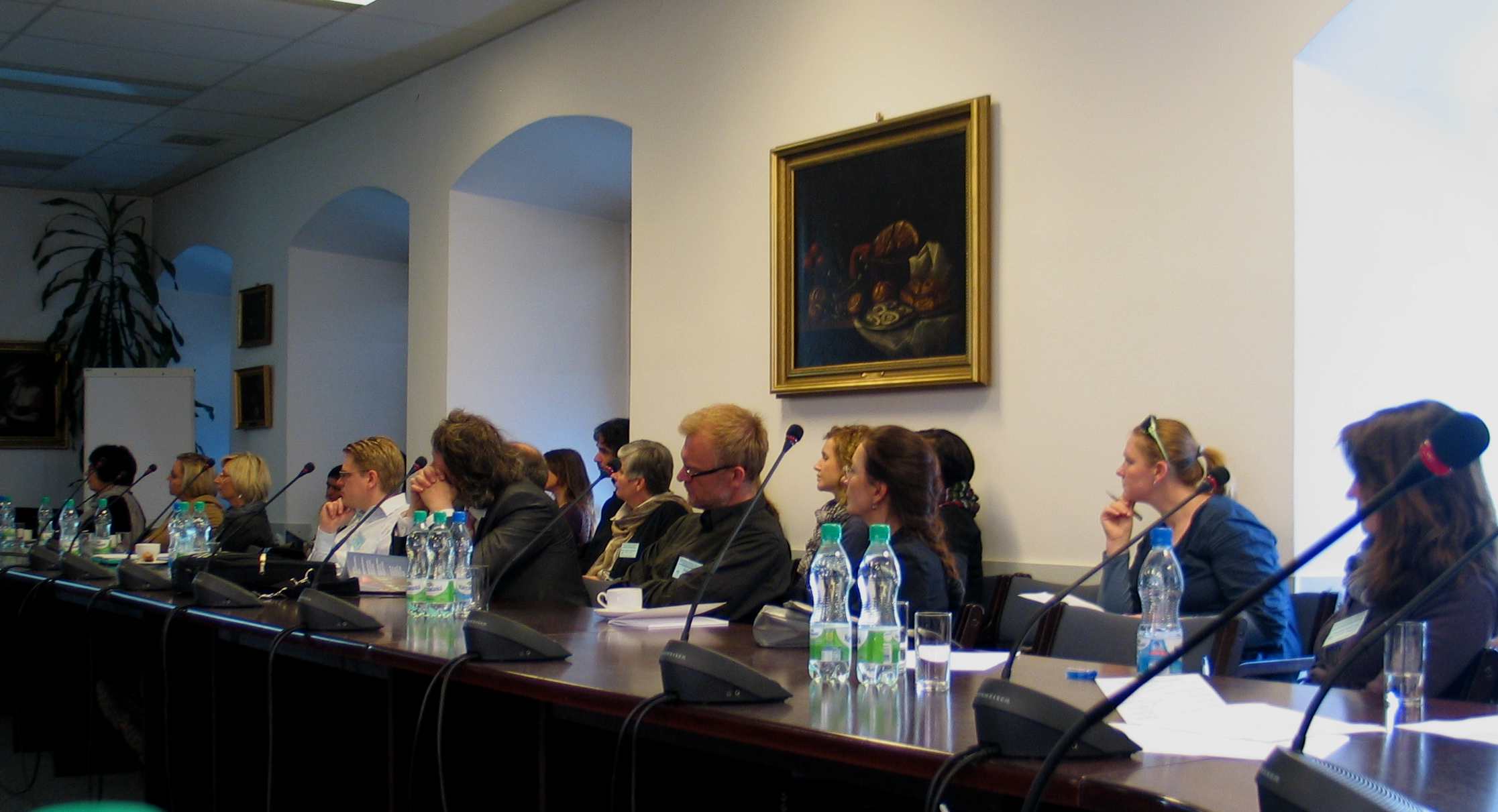 |
|
Impressions of the meeting in Krakow |
| |
| |
 |
| |
 |
| |
 |
| |
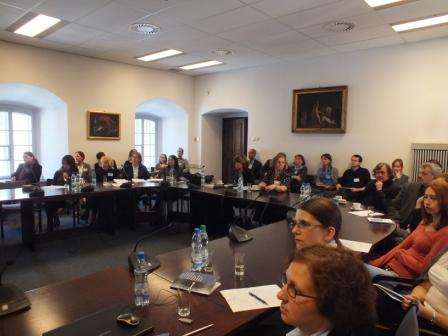 |
| |
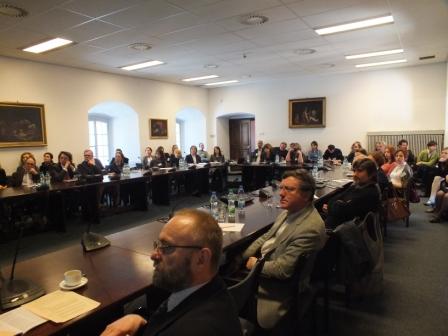 |
| |
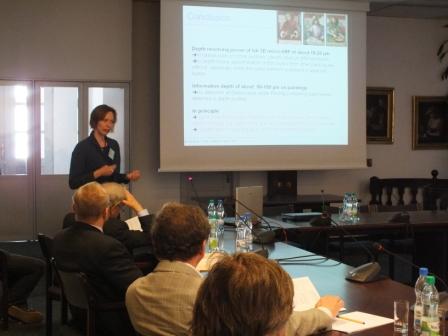 |
| |
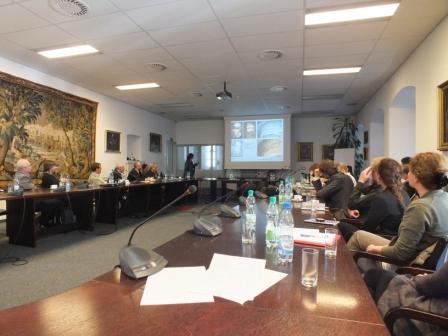 |
| |
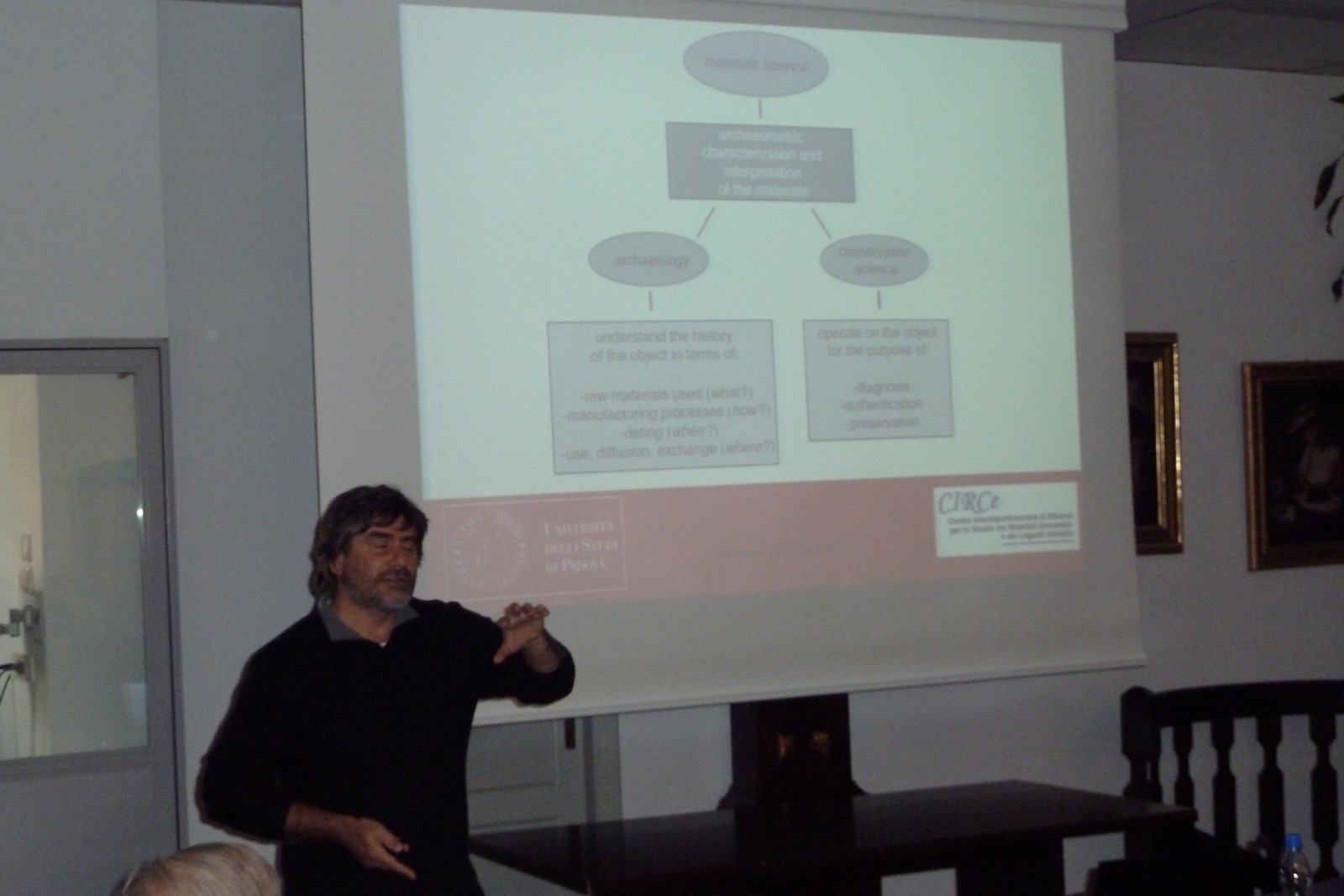 |
| |
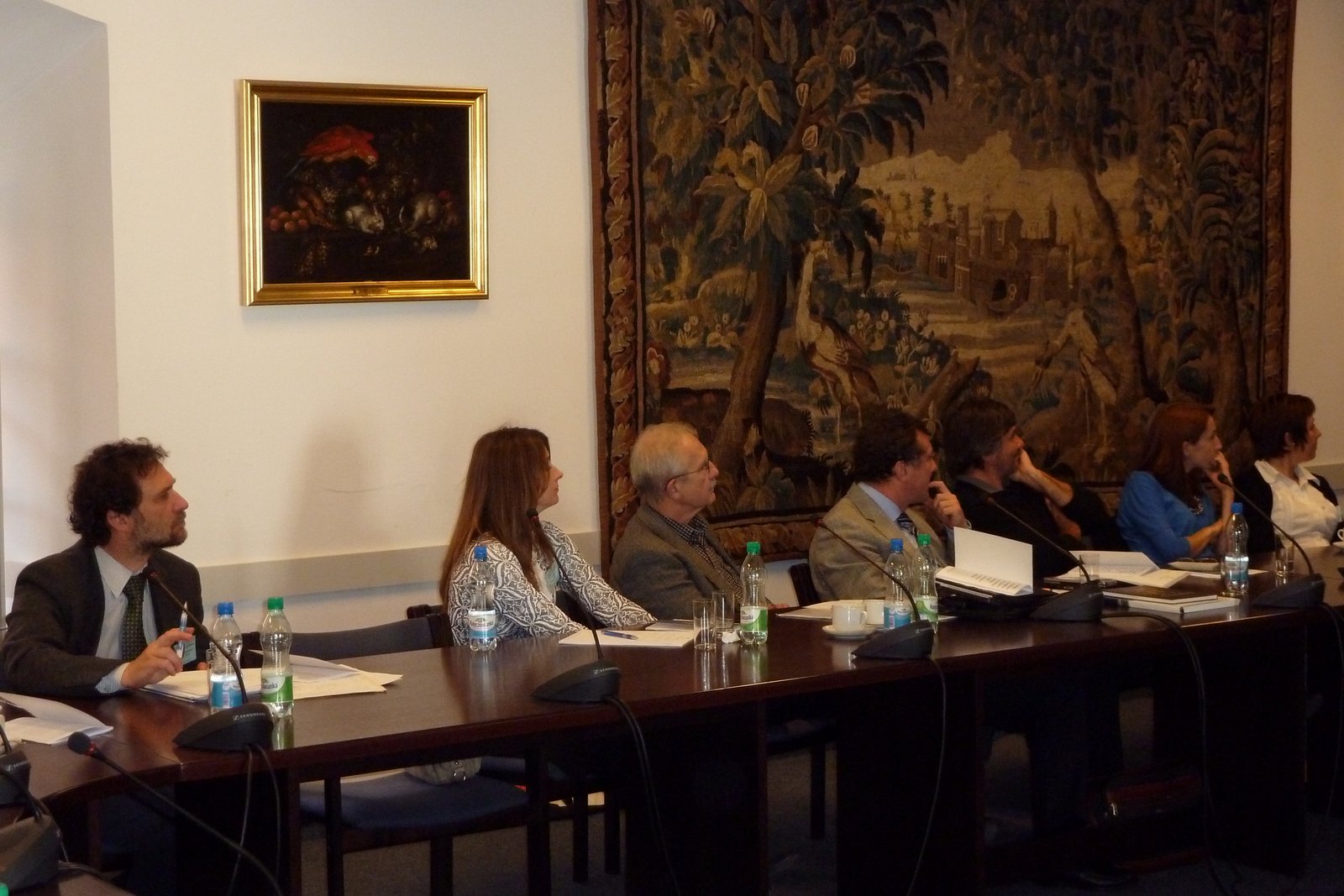 |
| |
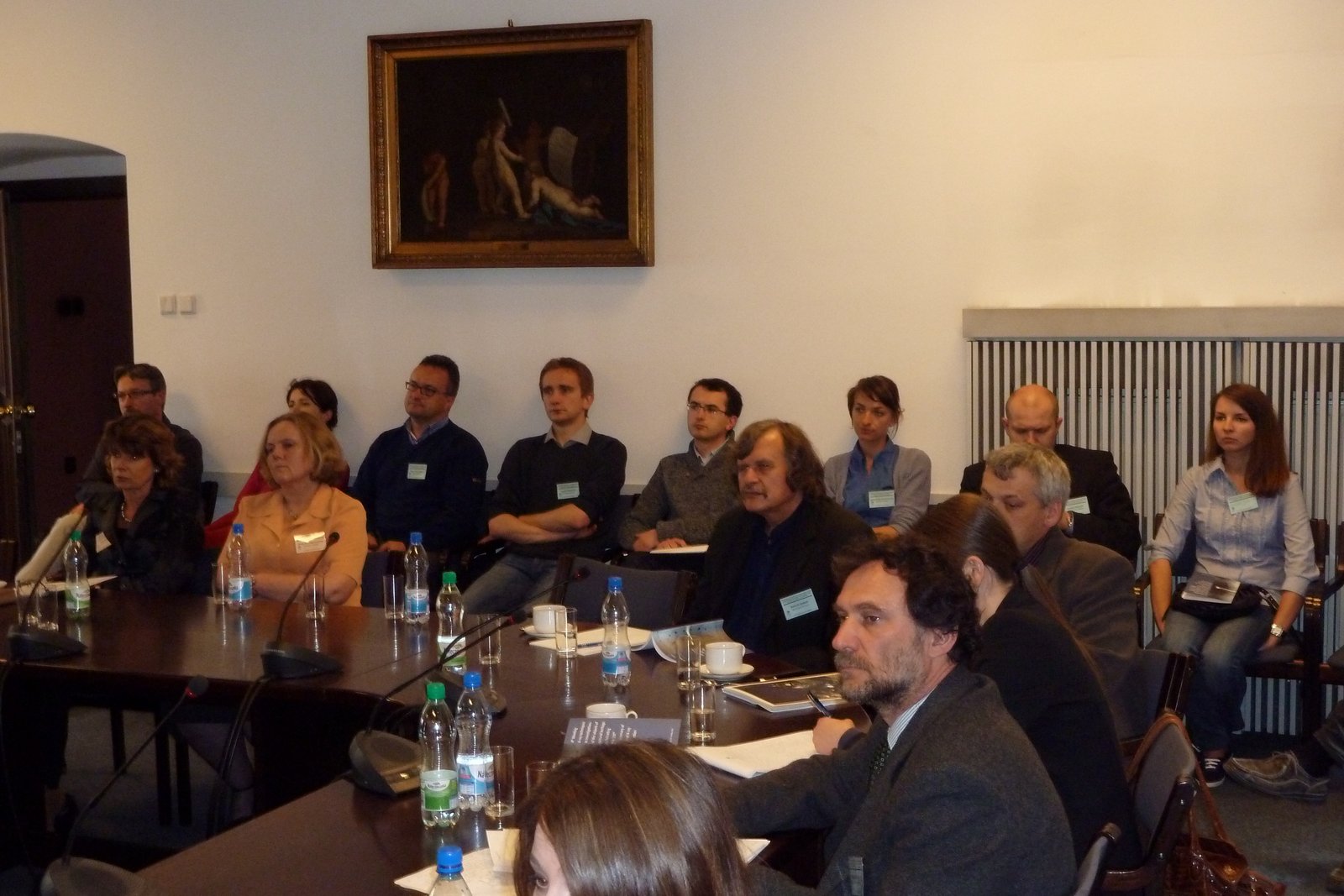 |
| |
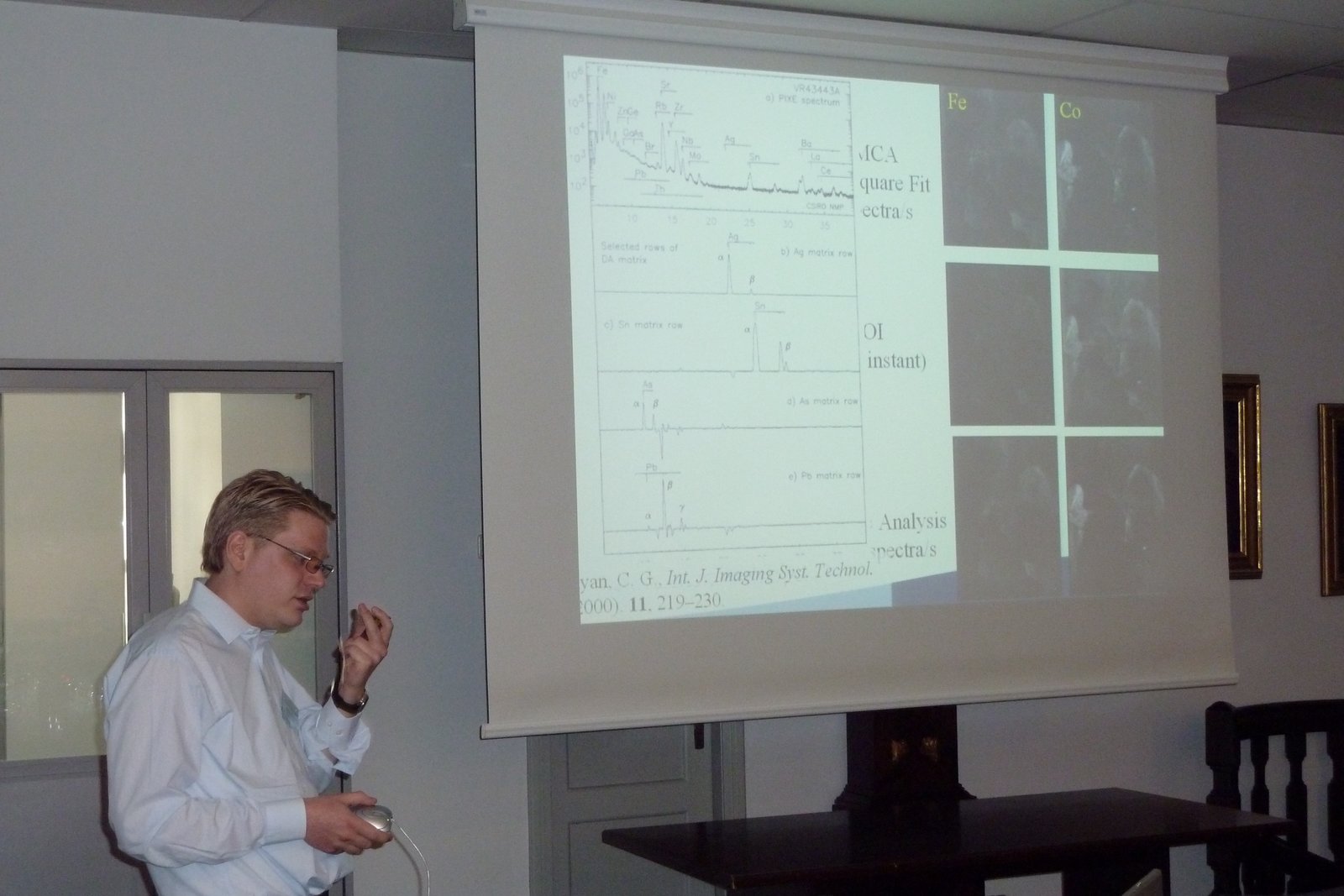 |
| |
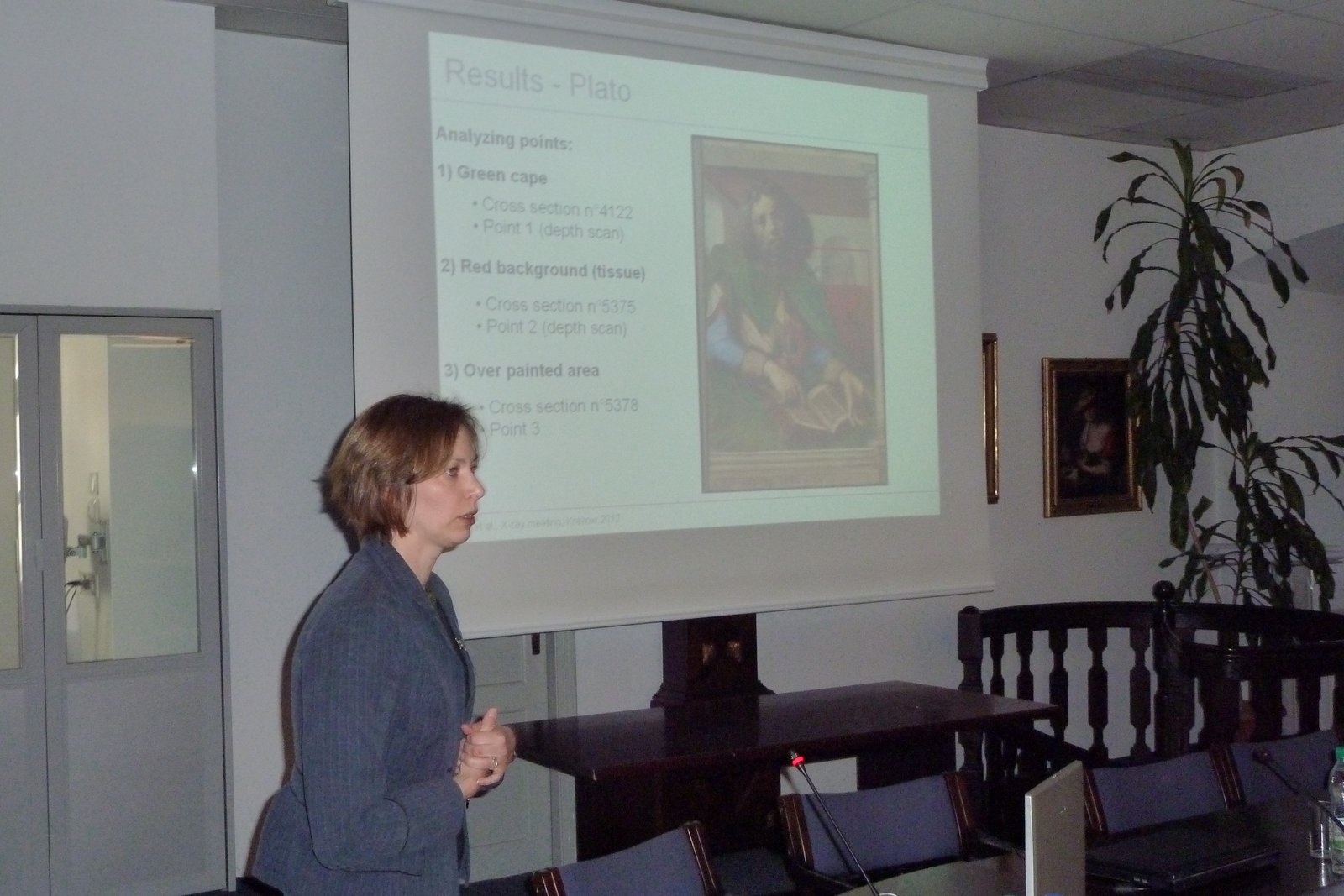 |
| |
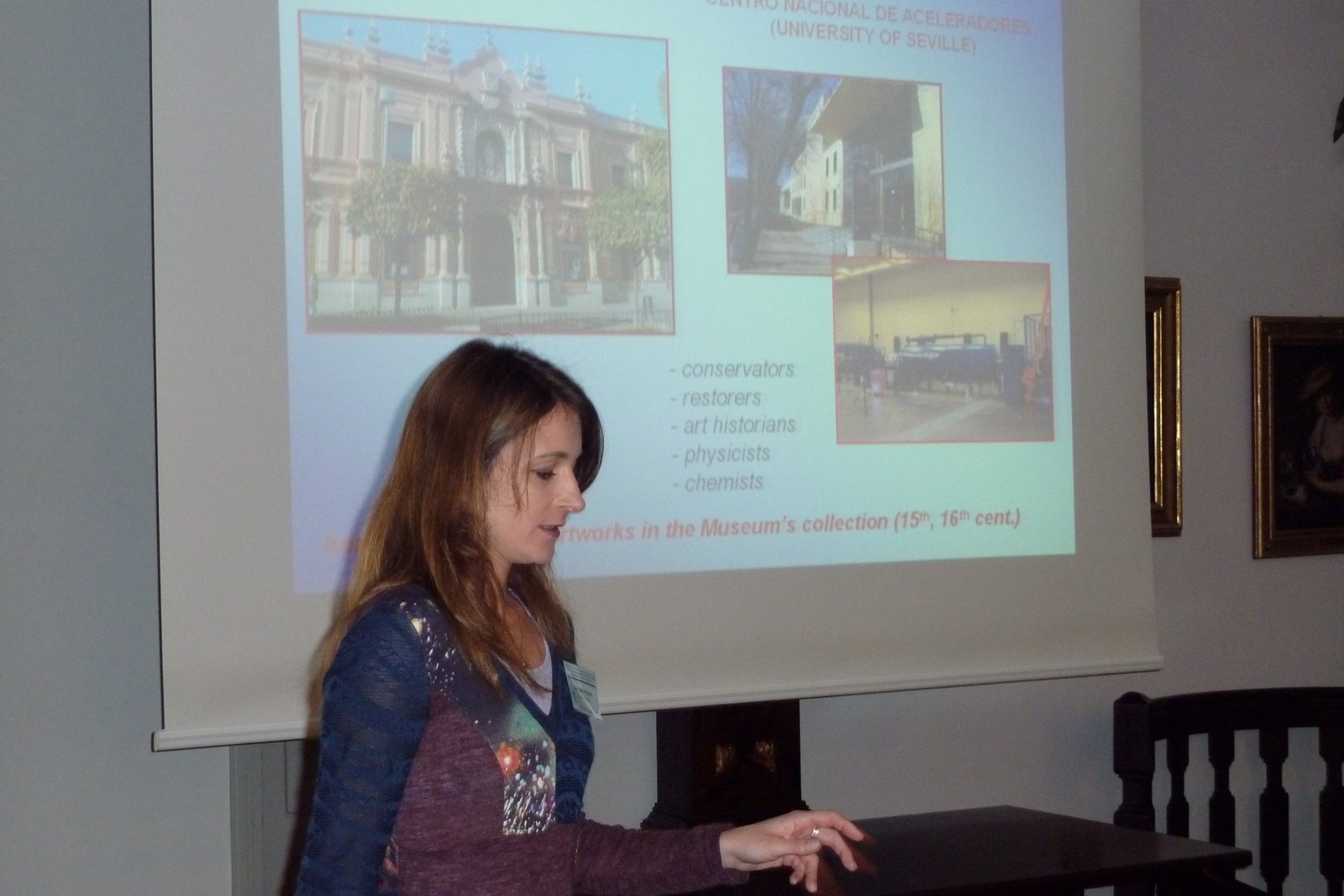 |
| |
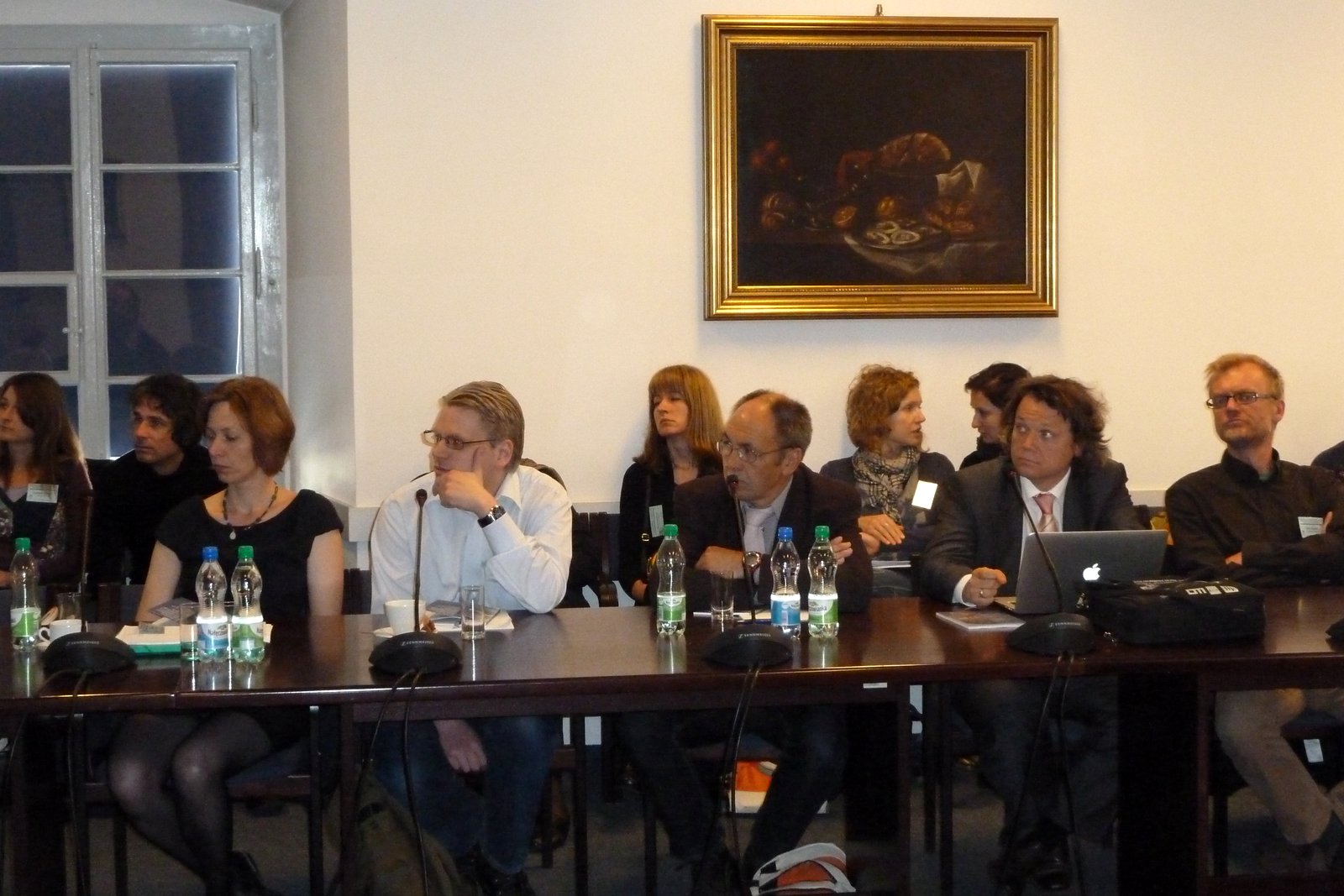 |
| |
| |
| |
| |
| |
| |
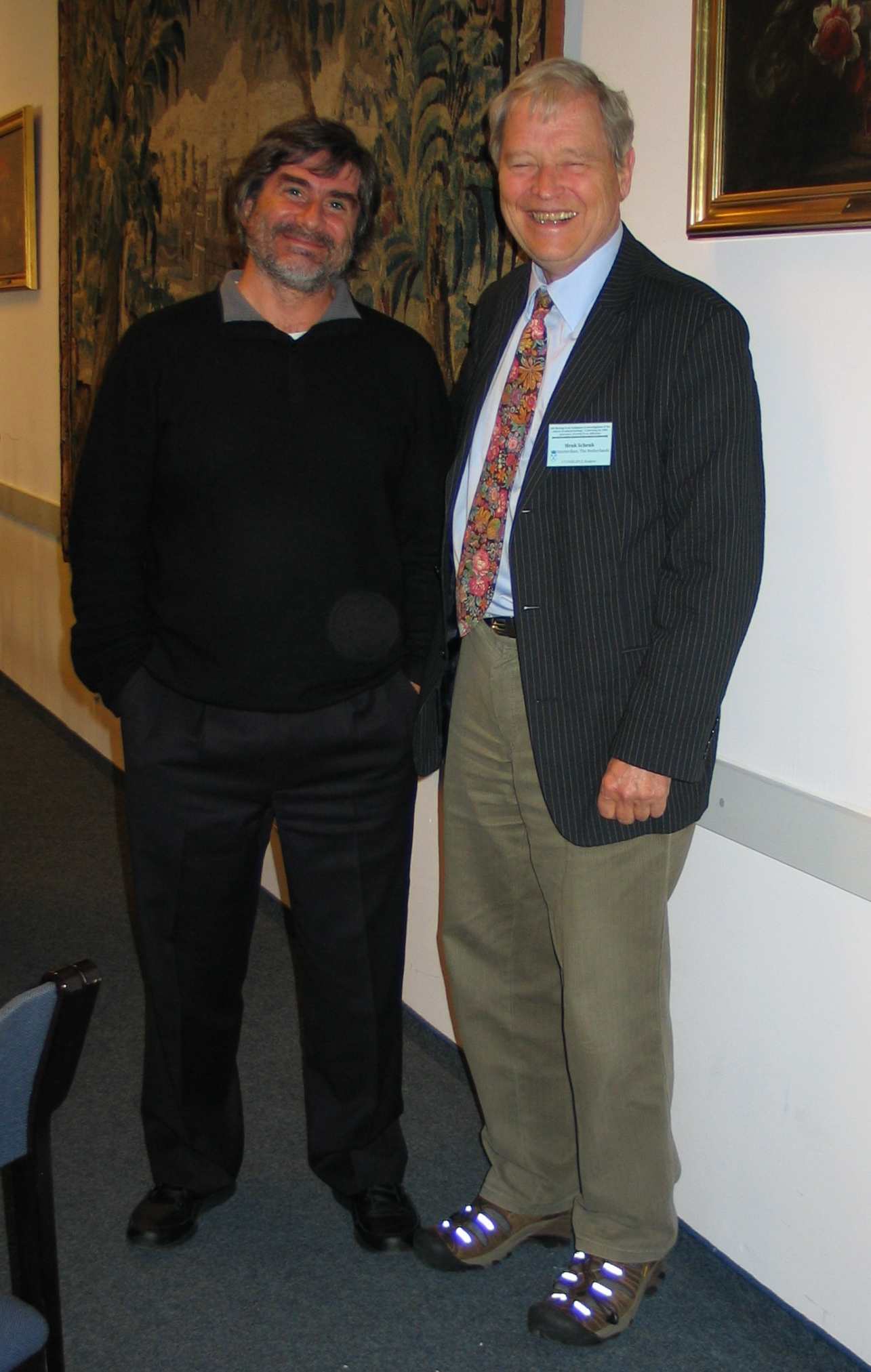 |
| |
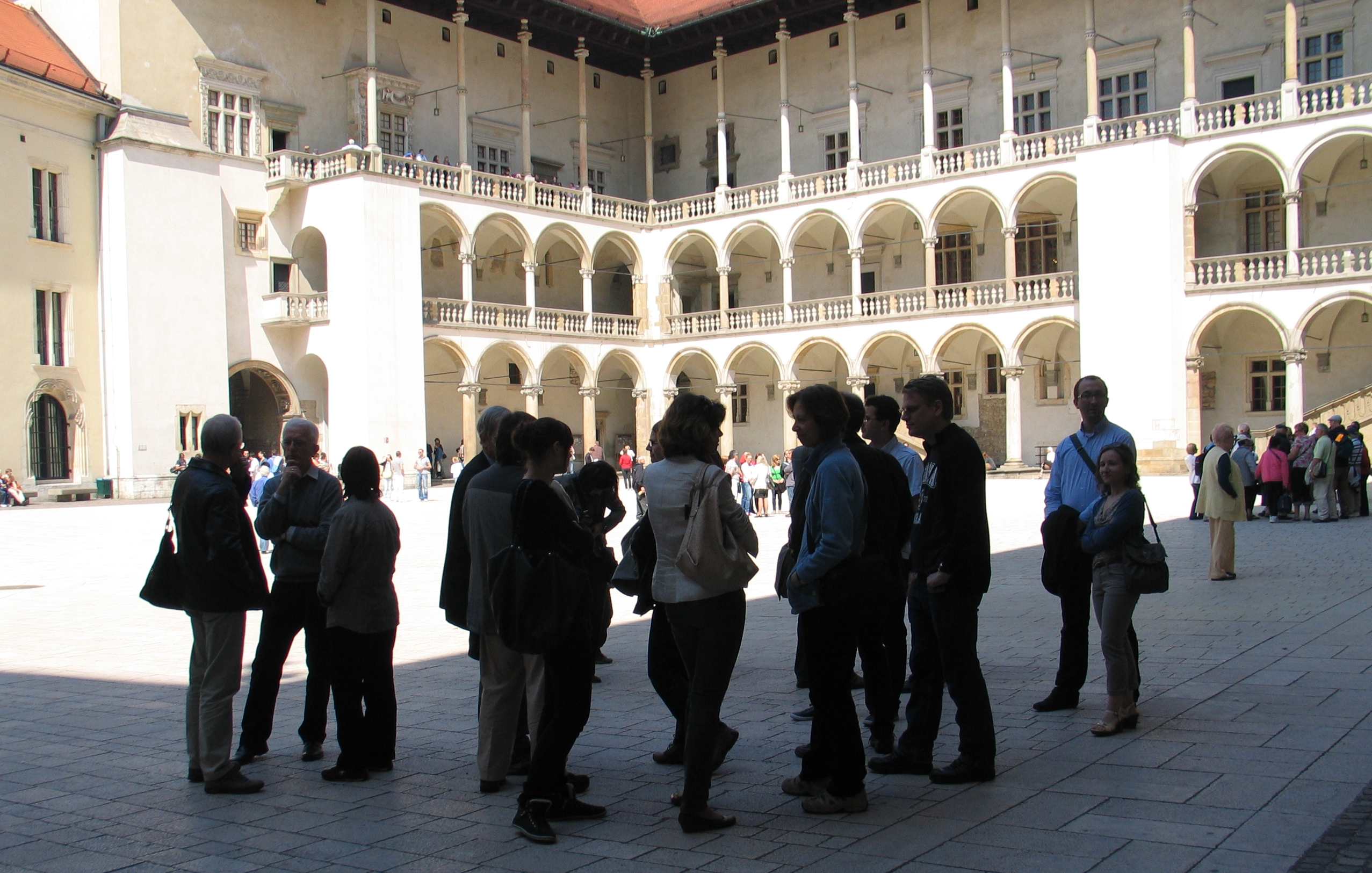 |
| |
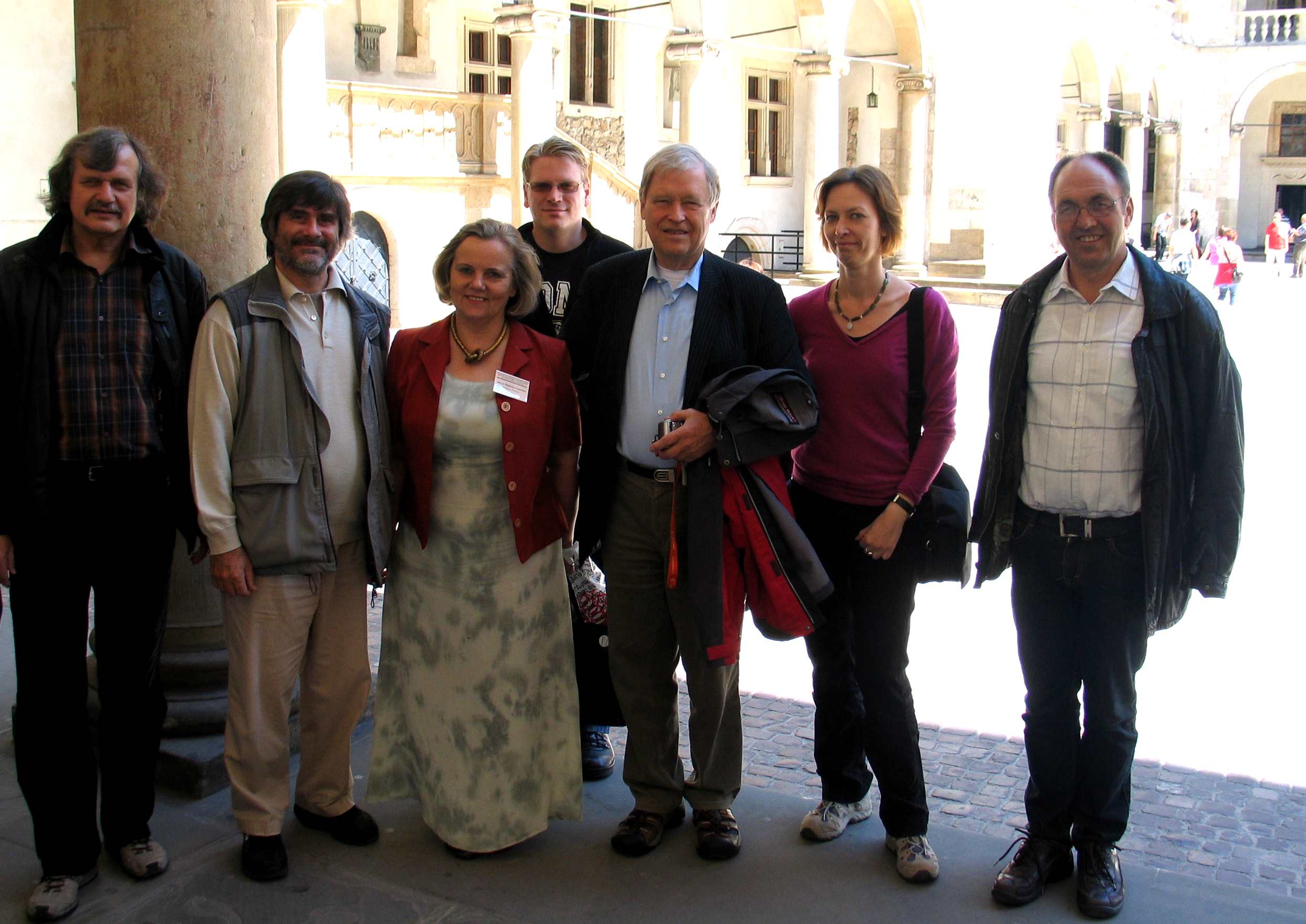 |
| |
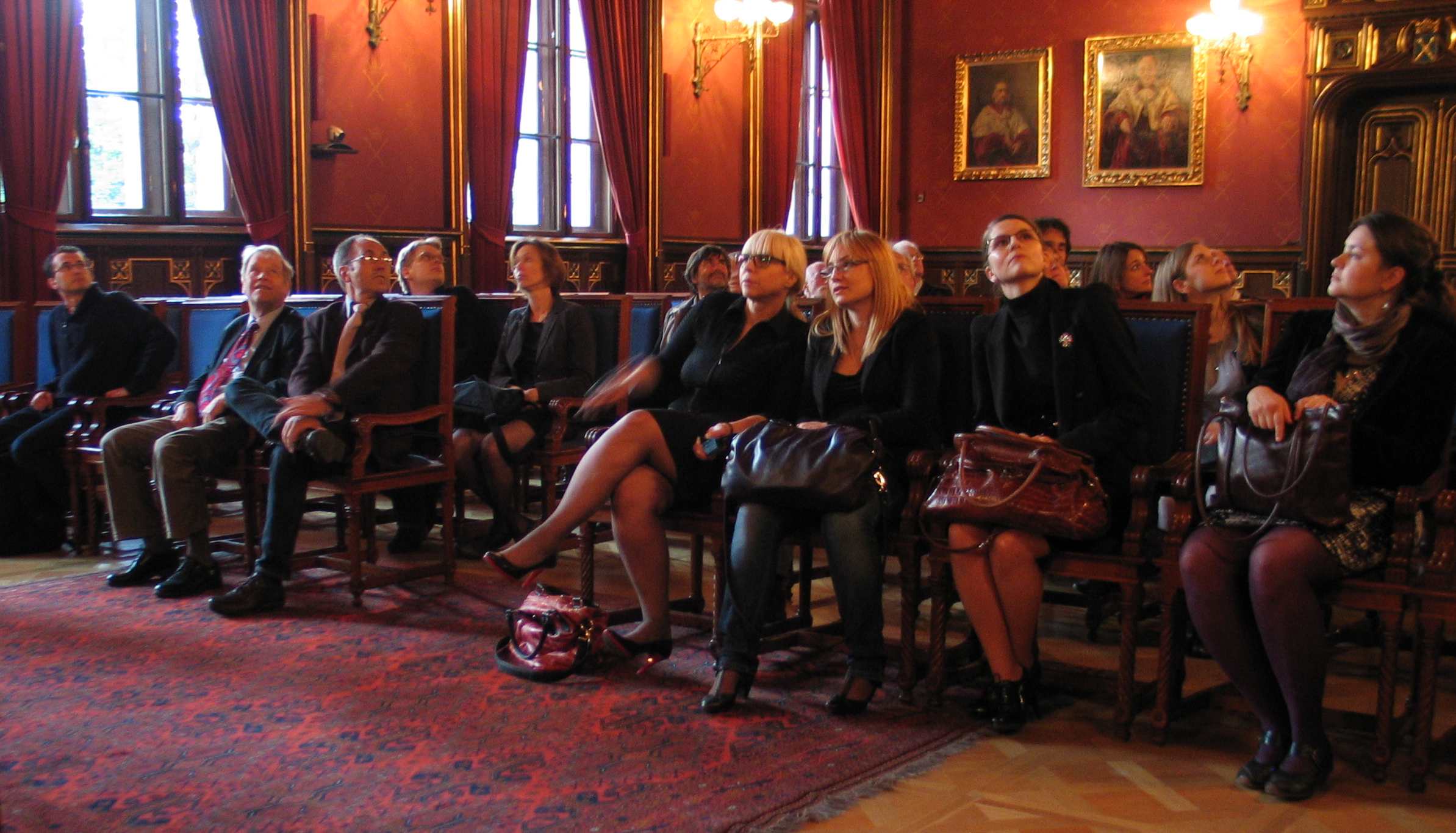 |
| |
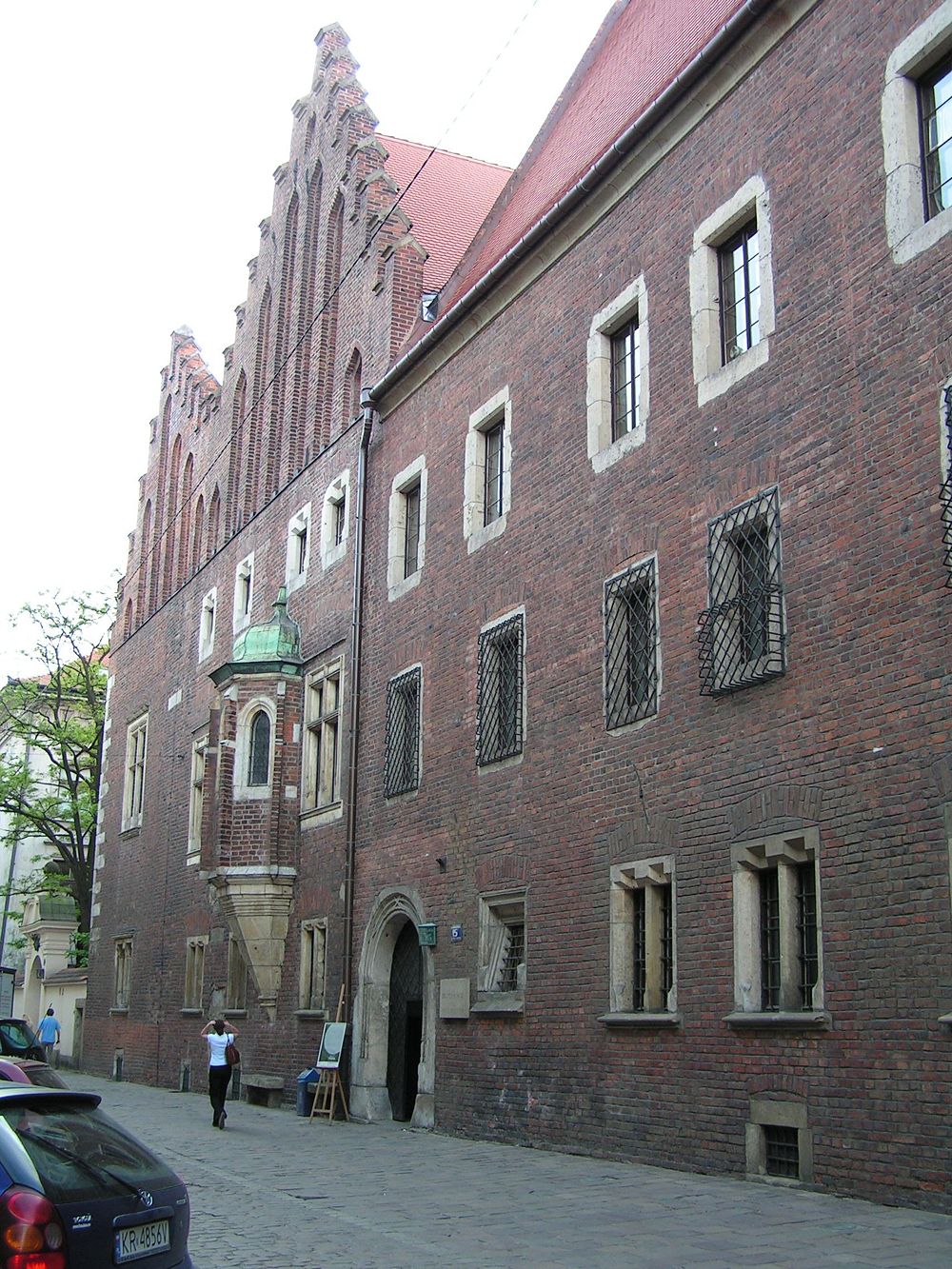 |
| |
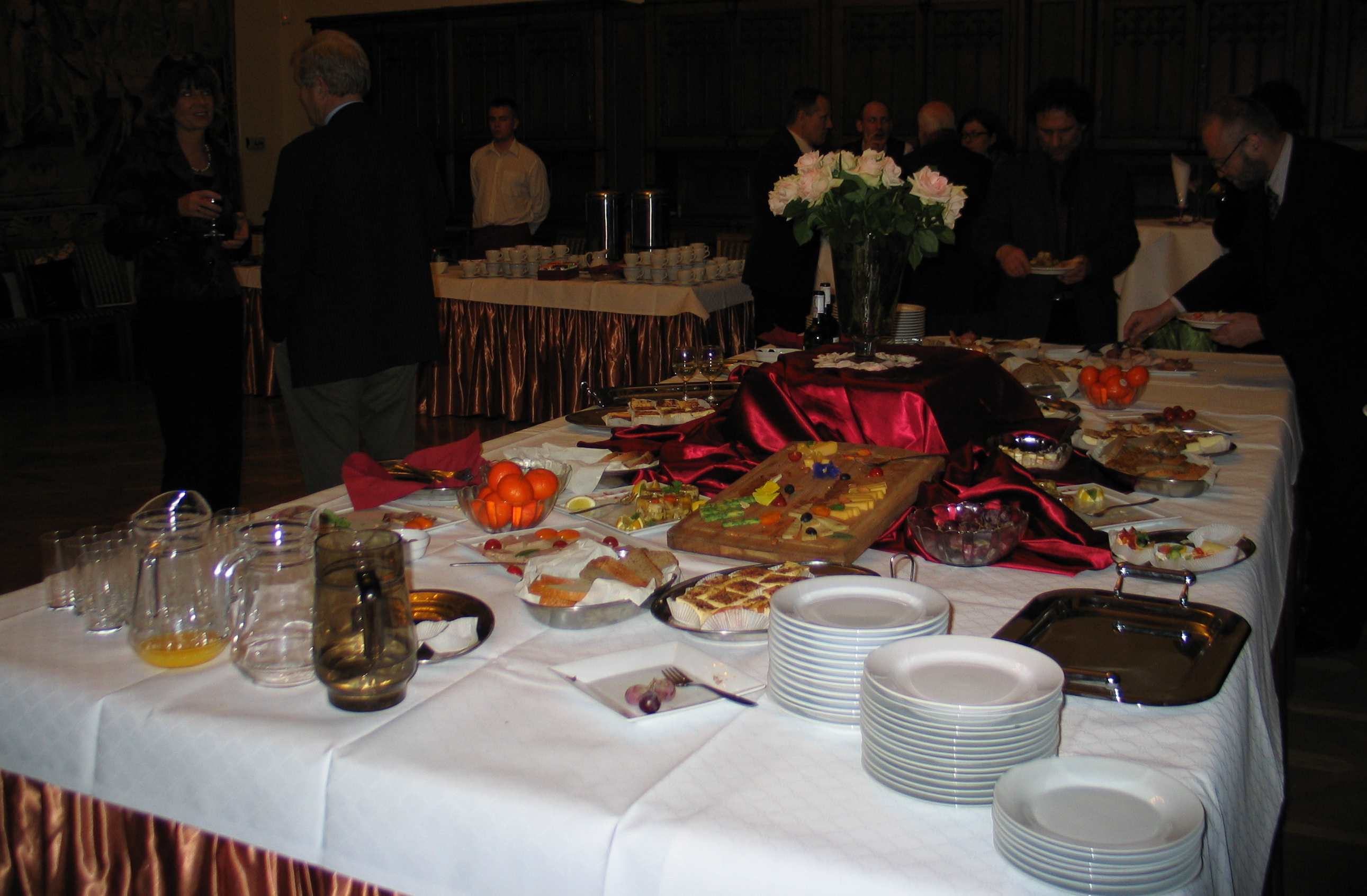 |
| |
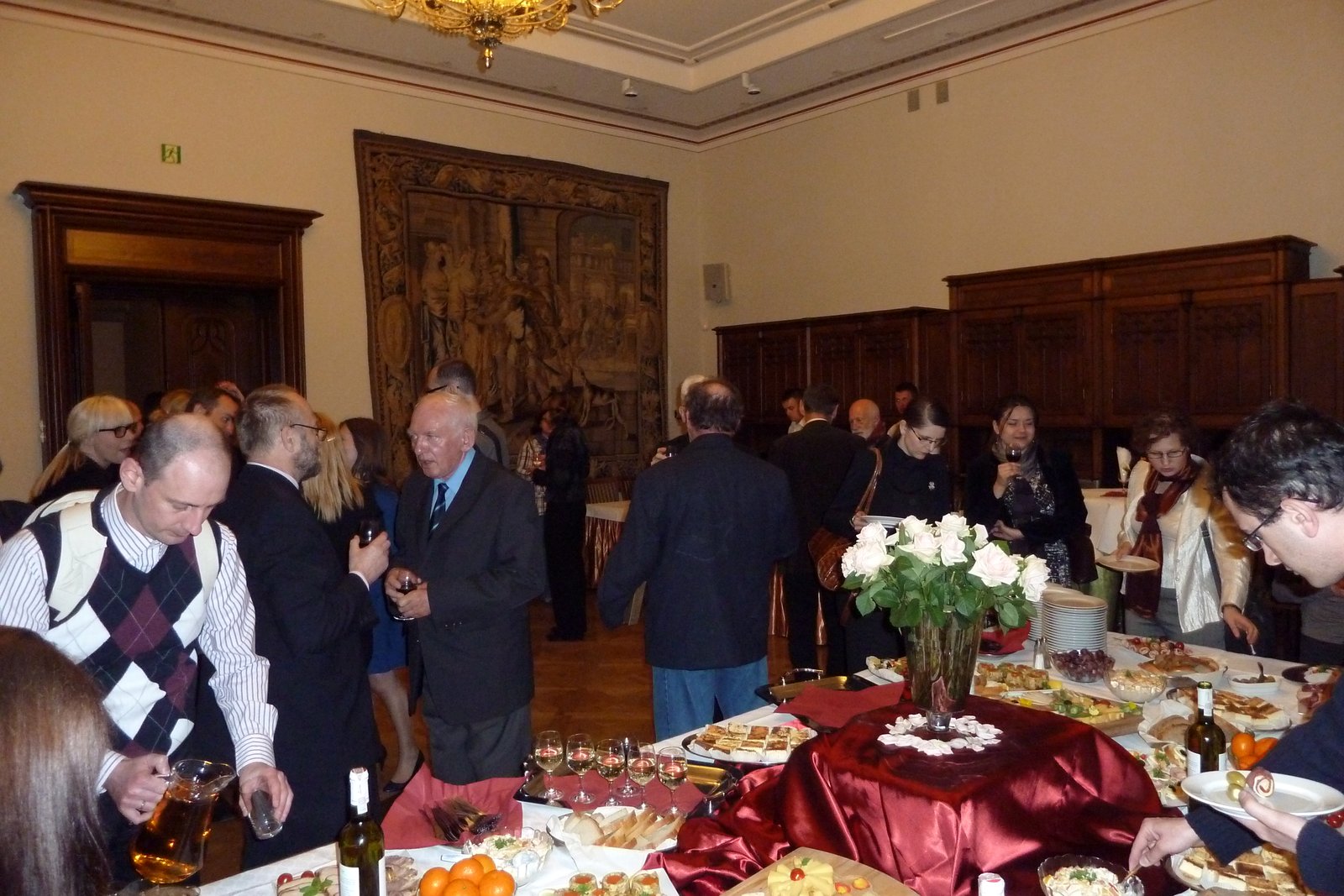 |
| |
 |
| |
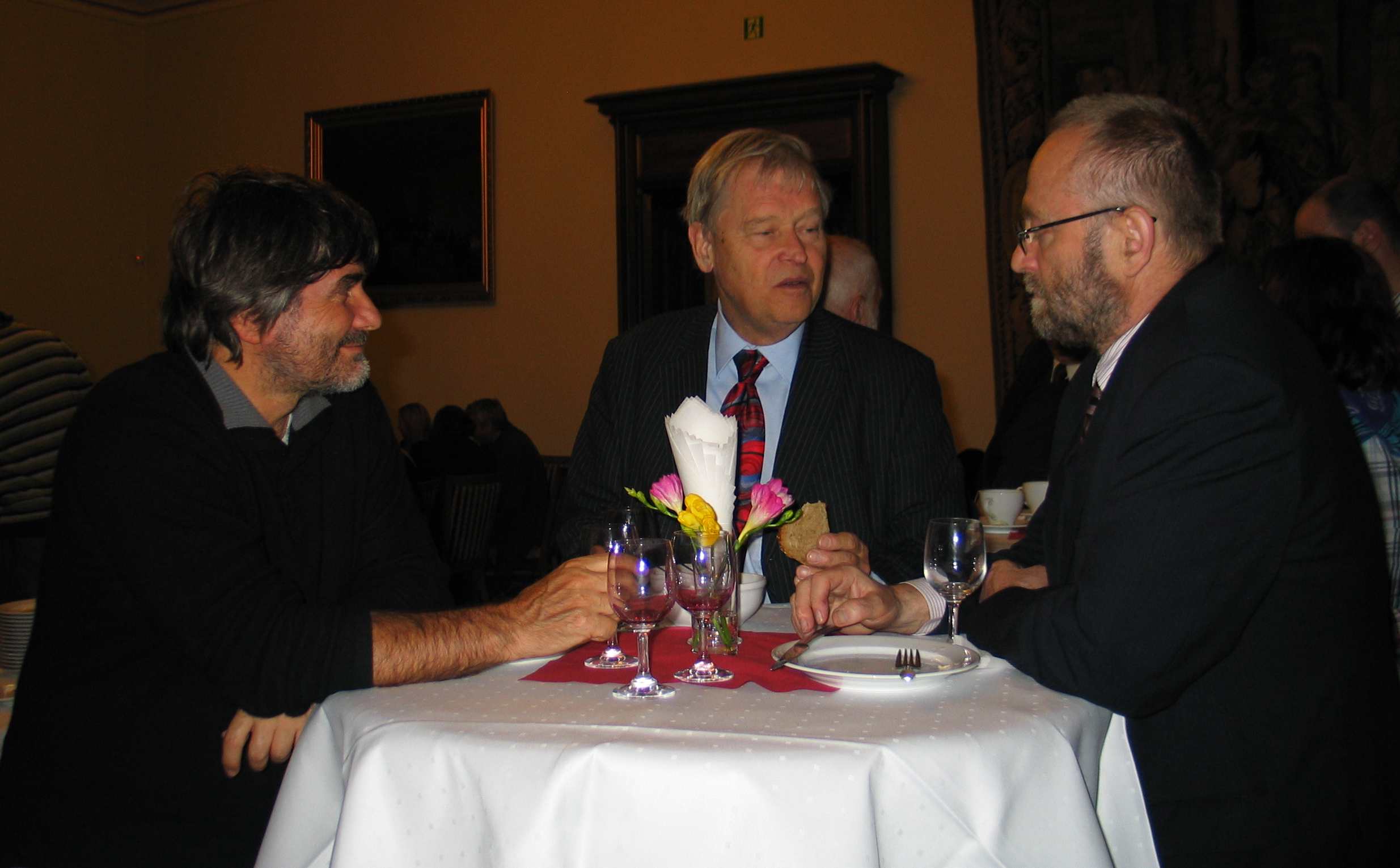 |
| |
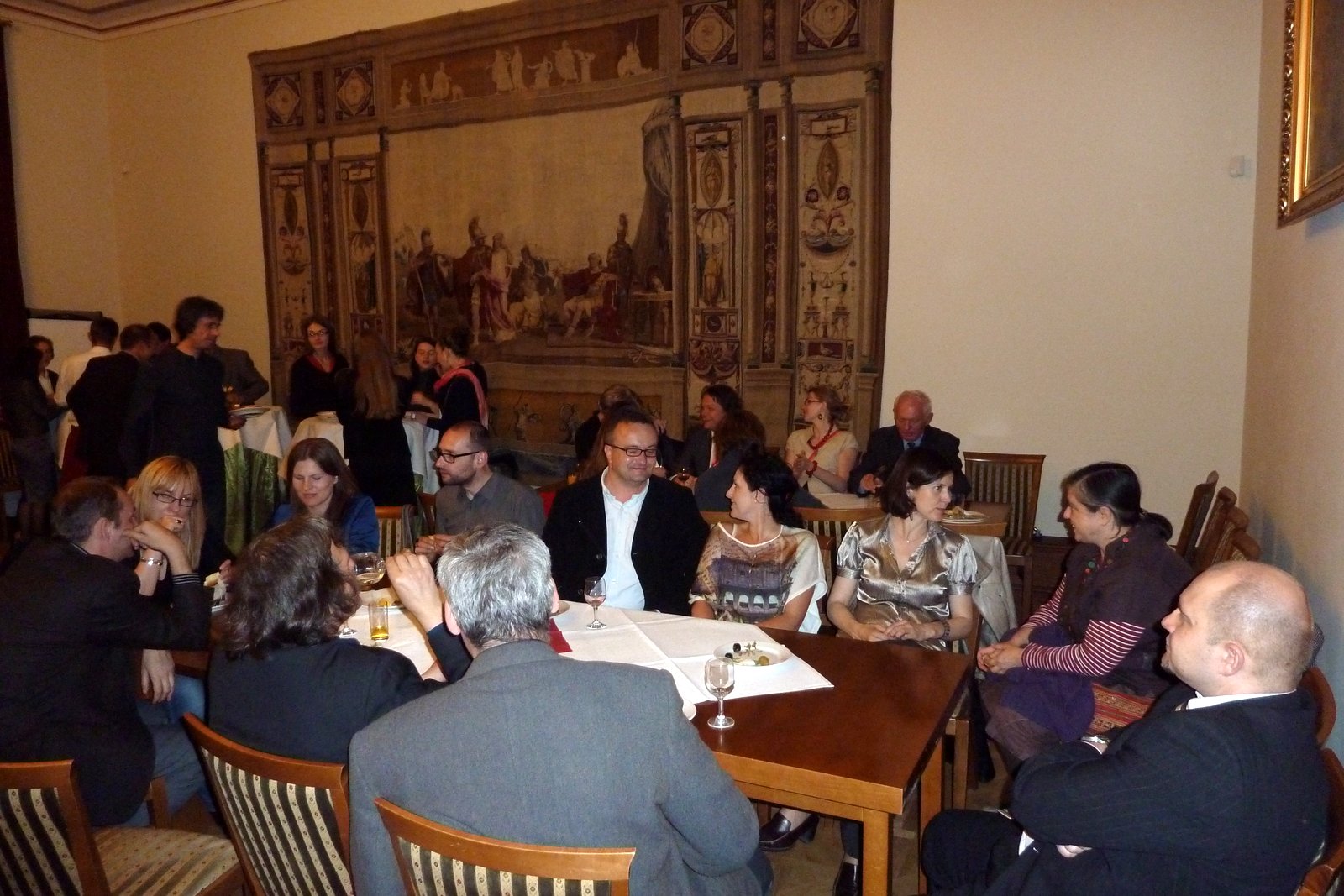 |
| |
|
2011 |
| |
CrysAC activities at the 22nd IUCr Congress, Madrid, Spain, 22-30 August 2011 |
| |
|
|
- IUCr Microsymposium MS 46:
"Powder Diffraction Methods in Archaeometry"
Chairs: Gilberto Artioli, Petr Bezdicka
Friday, August 26, 2011 , 10.15-12.50h
- KN 20, Emil Makovicky
"From Plane Groups to Quasilattices: Hispano-Islamic Ornamental Art of the Alhambra, Cordoba and Sevilla"
Chair: Stephen Hyde
Friday, August 26, 2011 17:40 - 18:30
- IUCr Microsymposium MS 91:
"X-Ray Absorption, Diffraction and Imaging in Forensic Science and Ancient Materials"
Chairs: Simona Quartieri, Jean Susini
Monday, August 29, 2011 , 10.15-12.50h
- Satellite Meeting
"Crystallography of Hispano-Islamic Ornamental Art:
Visit to the Alhambra in Granada"
August 30 - September 1, 2011
Granada, Spain
Lead person : Emil Makovicky
> Alhambra Excursion Program (pdf)
> Alhambra Registration
> some more information below
- Crystallography Between Art and Science
- Open Meetings of the CrysAC commission
Wednesday and Thursday,
24 and 25 August, 13:00-14:50
ROOM: Roma
You are welcome!
|
|
Crystallography Between Art and Science
An increasing number of researchers – artists and scientists equally – are exploring the intriguing space between science and art. On the one hand, natural science researchers are commonly confronted with visual research methods and results that involve design, visual perception, and aesthetics. On the other hand, artists often use scientific methods and instruments, and engage themselves in methodological questions and science-related topics.
At the XXII Congress of the International Union of Crystallography in Madrid, Spain, 22-30 August 2011, the IUCr together with the Commission on Crystallography in Art and Cultural Heritage (CrysAC) provided a platform to illustrate the important place of crystallography and the multiple aspects of its research at the interface between the arts and the sciences.
This call addressed all artists and crystallographers whose work and interest pertain to both the arts and the sciences. Each contributor was invited to submit up to 10 visuals (images as well as short animations and movies). A selection of these visuals related to crystallography was presented as a continuous looping slide show during the IUCr Congress 2011 in Madrid.
Further Information:
Dr. Anke Zürn
Biel, Switzerland
zuern@visual-chemistry.net |
1.) Powder Diffraction Methods in Archaeometry
IUCr Microsymposium MS 46
Friday August 26, 2011 , 10.15-12.50h
Chairs:
Petr Bezdicka, Institute of Inorganic Chemistry, Academy of Sciences of the Czech Republic
Gilberto Artioli, Dipartimento di Geoscienze Università di Padova, Italy
Invited talks:
Carolina Cardell Fernandez
Dpto. Mineralogia y Petrologia, Universidad de Granada, Av/ Fuentenueva s/n 18002 Granada, Spain
"X-ray diffraction methods as a complementary tool for analyses of historical objects"
Pauline Martinetto
Neel Institute, CNRS-UJF, Grenoble, France
"Structure and microstructure of ancient pigments by powder diffraction: the case of lead compounds and hybrid pigments"
2.) X-Ray Absorption, Diffraction and Imaging in Forensic Science and Ancient Materials
IUCr Microsymposium MS 91
Sunday August 8, 2011 , 10.15-12.50h
Chairs:
Jean Susini, European Synchrotron Radiation Facility, Grenoble, France
Simona Quartieri, Dipartimento di Scienze della Terra, Università di Messina, Italy
Invited talks:
Maria Pia Morigi
Dipartimento di Fisica, Università di Bologna
"X-ray Computed Tomography: a powerful diagnostic technique for Art and Cultural Heritage"
Koen Janssens
Department of Chemistry University of Antwerp
"Cultural heritage materials characterization by means of synchrotron radiation: spectroscopy-enhanced imaging to better understand alteration phenomena"
4.) Crystallography of Hispano-Islamic Ornamental Art:
Visit to the Alhambra in Granada
CrysAC Satellite Meeting:
August 30 - September 1, 2011
Granada, Spain
This event is proposed by the CrysAC “Crystallography in Art and Cultural Heritage” IUCr commission; the lead person for its contents is Prof. Emil Makovicky, University of Copenhagen.
The palace complex of the Alhambra in Granada (Andalusia) is the most comprehensive collection of Hispano-Islamic ornamental art at its peak development and offers examples spanning a wide range from plane groups of symmetry to quasilattices. The two-day excursion from Madrid will present and analyze ornamental patterns based on simple plane groups, dichroic plane groups, analysis of Islamic approach to polychromatic patterns, the use of layer groups and 1-D groups, the conscious combinations of different symmetry principles in one pattern and, finally, two-dimensional decagonal and octagonal quasicrystalline patterns. An afternoon session with presentations and discussion will precede the in situ study of the ornaments the following day.
For more information and formalize registration see www.iucr2011madrid.es or contact directly with Emil Makovicky, Emilm@geo.ku.dk
Related Key Note Lecture:
KN 20 Emil Makovicky
From Plane Groups to Quasilattices: Hispano-Islamic Ornamental Art of the Alhambra, Cordoba and Sevilla
Chair: Stephen Hyde
Friday August 26, 2011 17:40 - 18:30
Links to Alhambra:
> Alhambra @ wikipedia
> Patronato de la Alhambra y Generalife (official web site) |
| |
|
2010 |
| |
26th European Crystallography Meeting
ECM-26 Darmstadt , August 26 to September 2, 2010
MS 47: Crystallography in art and archaeology
Chairs: Eric Doryhee (Brookhaven, NY/US), Abdelmalik Thalal (Marrakech/MA)
MS47-T01
The symmetries of things
Chaim Goodman-Strauss (Fayetteville, AR/US)
MS47-T02
Arabesques for Abu Dhabi - an octagonal system
Jean-Marc Castera (Paris/FR)
MS47-T03
Quasiperiodic symmetry in a baroque Church in the Czech Republic
Jan Fábry (Prague/CZ)
MS47-T04
Classification of the Moroccan ornamental patterns constructed by the "Hasba" method
Youssef Aboufadil (Marrakech/MA)
MS47-T05
"Bossenstein" - unique ornamentation of "Weser-Renaissance"
Annegret Haake (Kronberg/DE) |
|
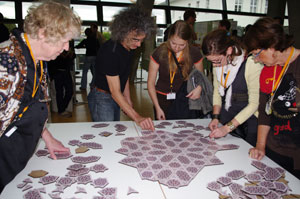
Jean-Marc Castera and his interactive poster on islamic tilings at the Darmstadt meeting. |
| |
INTERNATIONAL SCHOOL HUBERT CURIEN STRUCTURAL AND MOLECULAR ARCHAEOLOGY
NON-INVASIVE ANALYSIS OF PAINTING MATERIALS
ERICE - SICILY:14 - 21 JUNE 2010
Directors of the course:
- Philippe WALTER, Centre de Recherche et de Restauration des Musées de France
- David STRIVAY, Centre Européen d’Archéométrie, University of Liège
Director of the School:
- Georges TSOUCARIS, Centre de Recherche et de Restauration des Musées de France
> link to conference website
> program (pdf)
> book of abstracts (pdf)
Alicja Rafalska and Anke Zürn gave a double presentation, presenting CrysAC and its topics.
Lecturers
- C. AMATORE, Ecole Normale Supérieure, FR
- P. BAGLIONI, University of Florence, IT
- B. BRUNETTI, University Perugia, IT
- N. BROERS, ESA St-Luc, BE
- F. CASADIO, Art Institute of Chicago, US
- M. COTTE, ESRF, FR
- J. DIK, Technical University of Delft, NE
- M. EVENO, C2RMF, FR
- C. FOTAKIS, University of Crete, GR
- R. GARCIA MORENO, University of Liège, BE
- M. HARTWIG, Georgia State University, US
- K. JANSSENS, University of Antwerp, BE
- M. MENU, C2RMF, FR
- C. MILIANI, University Perugia, IT
- A. RAFALSKA-LASOCHA, Jagiellonian University, PL
- A. ROUVERET, University of Paris X, FR
- J. SANYOVA, KIK-IRPA, BE
- D. STRIVAY, University of Liège, BE
- J. SUSINI, ESRF, FR
- P. VANDENABEELE, University of Gent, BE
- L. VINCZE, University of Gent, BE
- P. WALTER, C2RMF, FR
- A. ZURN, ETH Zurich, CH
|
|

 Chiesa di S. Carlo, Erice Chiesa di S. Carlo, Erice
Built between 1612-1617, and partially reconstructed in the middle of the 18th century.
|
| |
X-ray techniques in investigations of the objects of cultural heritage.
Around Rembrandt and his workshop
Scientific Achievements in Art
3rd meeting, Krakow, Poland, 13-16 May 2010
Collegium Maius of Jagiellonian University
http://www.heritagescience.pl/workshop
> book of abstracts (pdf)
see detailed report here
Organizers
Faculty of Chemistry, Jagiellonian University,
Jagiellonian University Museum,
Institute of Catalysis and Surface Chemistry, Polish Academy of Sciences.
In co-operation with International Union of Crystallography, Commission on Crystallography in Art and Cultural Heritage.
International Scientific Committee
Professor Henk Schenk,
Amsterdam University, the Netherlands,
Dr Eric Dooryhee,
Centre National de la Recherche Scientifique, France,
Dr Thomas Wroblewski,
Deutsches Elektronen-Synchrotron, Germany.
Local Committee
Prof. Grażyna Stochel
Prof. Stanisław Waltoś
Prof. Małgorzata Witko
Prof. Wieslaw Lasocha
Prof. Roman Kozłowski
Alicja Rafalska-Łasocha
Anna Jasińska
Jolanta Pollesch |
|
 |
| |
|
2009 |
| |
| The XXV European Crystallographic Meeting was held from 9 to 14 August 2009 in Istanbul, Turkey. |
| |
|
|
Symmetry and Crystallography in Turkish Art and Culture
Satellite Conference of the ECM-25
Istanbul, Turkey, 14-16 August 2009
The IUCr MaThCryst commission in cooperation with the CrysAC commission organizes a Satellite conference on Art and Crystallography devoted to the analysis of the crystallographic aspects of Art and Culture in Turkey and neighbouring countries an regions like Middle Asia, Caucasus, Iran, Anatolia, Middle East, including carpet ornaments and kilim frames (wiki). The Satellite conference will be completed by a workshop do it yourself and a short excursion.
For more details see the MathCryst satellite website
Abstracts and didactic material (links to MathCryst website)
- Program and Abstracts (PDF, 1.3 Mb)
- Hacali Necefoğlu: Turkish Crystallographic Patterns: From Ancient to Present (text) (PDF, 4.5 Mb)
- Hacali Necefoğlu: Turkish Crystallographic Patterns: From Ancient to Present (slides) (PDF, 10.5 Mb)
- Şahika Ünal: Symbolic Meanings and Characteristics of Analtolian Kilims (PDF, 3.5 Mb)
- Manfred Schreiner: The monetary history of the Ottoman Empire - The silver content of the Akce coins during the reigns of Murad III, Mehmed III, and Ahmed I (PDF, 16.2 Mb)
- Izumi Nakai: X-ray diffraction and fluorescence analysis of archaeological anatolian artifacts by portable equipments (PDF, 2.0 Mb)
- Imameddin Amiraslan: Micro Art of Crystallizing (PDF, 1.7 Mb)
- Imameddin Amiraslan: Background Less Geometric Calligraphy (PDF, 2.7 Mb)
Contact: Mathcryst.Commission@crm2.uhp-nancy.fr |
|
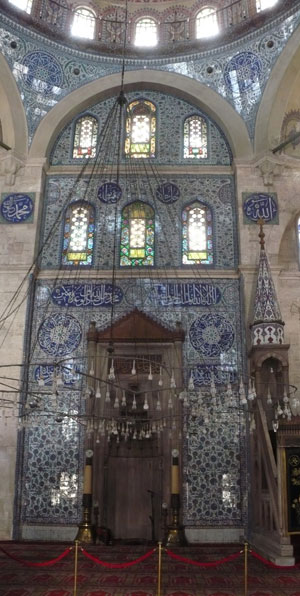 16 August 2009: Visit to the The Blue Mosque = Sultanahmet Camii, Turkish & Islamic Arts Museum and The Sokollu Mehmet Pahsa Camii 16 August 2009: Visit to the The Blue Mosque = Sultanahmet Camii, Turkish & Islamic Arts Museum and The Sokollu Mehmet Pahsa Camii
|
| |
|
2008 |
| |
IUCr 2008 - XXI Congress and General Assembly of the International Union of Crystallography
23-31 August 2008
> IUCr 2008 Osaka meeting web site
> Abstracts online
Crystallography in art and archeology
Evening Session Art and Crystallography
Grand Cube Osaka / Osaka International Convention Center, Japan
Massimo Nespolo (Chair)
Kazumasa Ohsumi (Co-chair)
Abstracts (pdf)
The special session is newly scheduled in the evening on August 26, 2008, the 3rd day of the scientific program of the Congress. The intrinsic beauty of crystal and its symmetry inspires artists, while the crystallographic understanding of the beauty of art has been achieved after the great effort. Interesting topics will be presented in an enjoyable evening atmosphere. Its program will appear shortly.

The members of the CrysAC Commission at the IUCr 2008 Osaka meeting, during the first Open Meeting of the newly formed commission (courtesy of Prof. R. Gould, University of Edinburgh).
From left to right: Abdelmalek Thalal, Alicja Rafalska-Lasocha, Simona Quartieri, Eric Dooryhée, Cele Abad-Zapatero, Anke Zürn, E. Makovicky (Gautam Desiraju is absent).
Approved by action of the IUCr Assembly, 28 August 2008:
The Commission on Crystallography in Art and Cultural Heritage was formed at the Osaka Congress in 2008 and is concerned with two main issues:
- Crystallography and symmetry in art;
- Crystallographic analysis (e.g. diffraction-based) of artworks and ancient materials.
|
|
|
| |
X-ray techniques in investigation of the objects of cultural heritage
EPDIC-11 Workshop,
Krakow, Poland, 18-19 September 2008
The aim of the Workshop is to promote the development and use of X-ray techniques in order to extract information from the objects of cultural heritage and to have scientists and conservators present the advanced methods of investigation in this area. |
| |
|
2007 |
| |
ECM 24 in Marrakech
European Crystallography Conference 24
Marrakech, Morocco, 2007
THE ENCHANTING CRYSTALLOGRAPHY OF MOROCCAN ORNAMENTS
ECM-24 Satellite Conference on Mathematical and Theoretical Crystallography
The CrysAC commision was still not existent, but most of the members participated the wonderful satellite workshop organized by the MathCryst commision.
Didactic material
Didactic material from the lectures is available for download (25.1 Mb) from the MathCryst website.
|
|
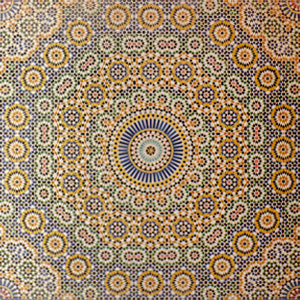 |
| |
|
|
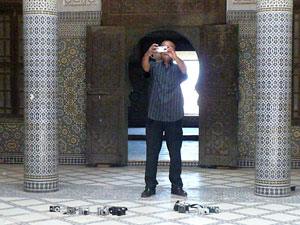
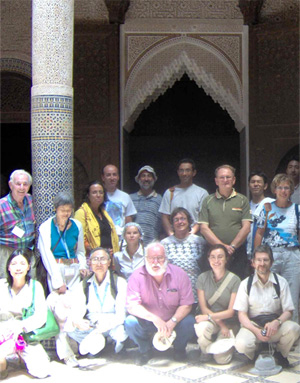
|
|

|
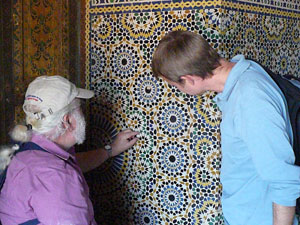 |
| Trip to the Kasbah of Telouet |
|
|



